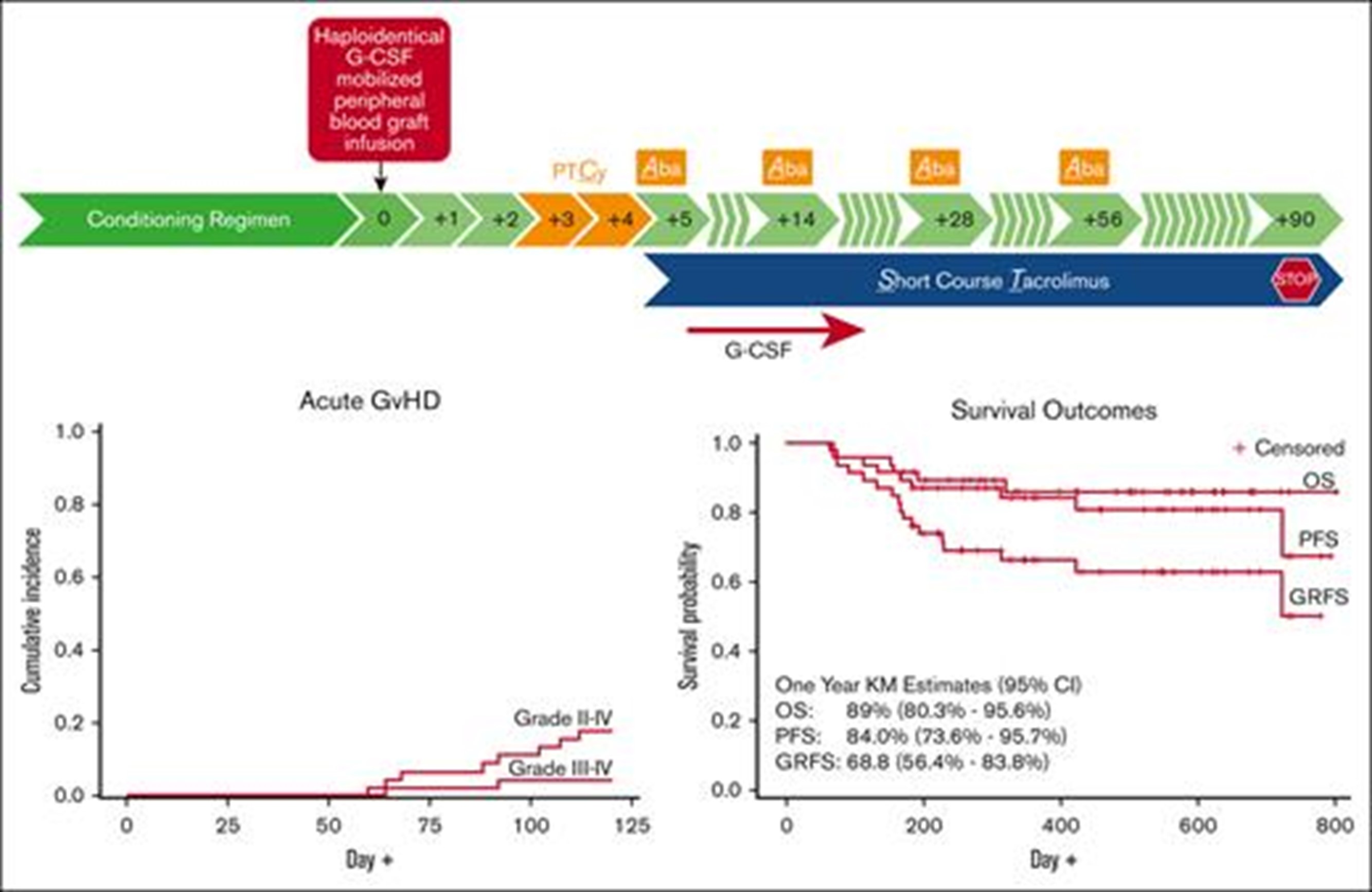A Phase Ib-II, single-center clinical trial aimed to evaluate the safety and efficacy of post-transplant cyclophosphamide (PTCy), abatacept, and a short course of tacrolimus (CAST) in reducing the incidence of acute graft-versus-host disease (aGVHD) after haploidentical hematopoietic cell transplantation (haplo HCT).
The findings demonstrate the CAST regimen reduces rates of aGVHD, with a promising safety profile, and does not excessively suppress the immune system. Despite the study's limitations, the results provide a strong foundation for future multi-institutional, randomized trials, with the potential for addressing health disparities in donor availability for diverse racial and ethnic groups.
Download a PDF of the study highlights and citation here.
Background
The study addressed the challenge of reducing the incidence of aGVHD in recipients of haplo HCT. PTCy is the primary agent used to prevent GVHD in haplo HCT, but its efficacy might be improved with the addition of other agents. To explore the possibility that PTCy can be safely combined with other immune modulators, researchers conducted a Phase Ib-II clinical trial examining the safety and efficacy of a combined regimen.
Study Details
The trial enrolled adult patients aged 18 and above (n=46) with a Karnofsky performance score greater than or equal to 70 undergoing peripheral blood haplo HCT for hematologic malignancies between September 2020 and August 2022. The median age was 60 (range 18-74).
Patients' conditioning regimens, including non-myeloablative, reduced-intensity, or myeloablative, were determined by age, performance status, HCT-specific comorbidity index, and disease type and status. GVHD prophylaxis incorporated cyclophosphamide, abatacept, and tacrolimus, adjusted based on individual response and tolerability. The primary endpoint focused on the incidence of grades II-IV acute GVHD by day 120 post-transplant.
Results
Results indicated a 17.4% incidence of grade II-IV aGVHD, a 4.4% incidence of grade III-IV aGVHD, and a 1-year treatment-related mortality (TRM) rate of 4.4%. The trial also demonstrated favorable 1-year outcomes, including a progression-free survival rate of 84.1%, an overall survival rate of 85.9%, and a GVHD and relapse-free survival rate of 66.1%, as shown in the Figure below.
The study results suggest the CAST regimen is safe and effective in reducing the incidence of aGVHD grades II-IV after peripheral blood haplo HCT.
Key Takeaways
The study demonstrates that the CAST regimen can significantly reduce the incidence of aGVHD following peripheral blood haplo HCT. Results show that the regimen doesn't excessively suppress the immune system, thus not increasing the rates of infectious complications or impairing the graft versus leukemia effect, which can lead to a higher TRM or relapse rate, respectively.
Researchers highlight the need for further investigation into the optimal duration of abatacept for GVHD prevention and the optimal dose of PTCy. Though limitations of the study suggest a need for larger, multi-institutional, randomized studies to further validate these findings, the CAST regimen may be a promising option for reducing the risk of aGVHD.

Al-Homsi AS, et al., Published in Blood Advances.
